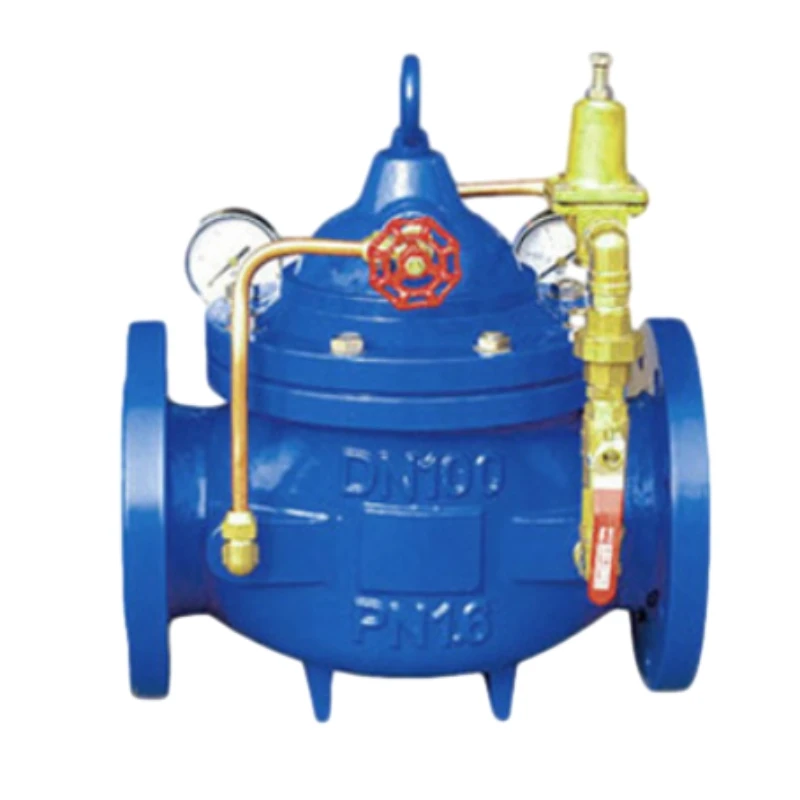Nov . 11, 2024 18:18 Back to list
types of knife gate valves
Types of Knife Gate Valves
Knife gate valves are essential components in various industrial applications, particularly in fluid handling systems. Their design allows them to efficiently control the flow of liquids, slurries, and gases, making them indispensable in sectors like wastewater management, mining, and chemical processing. In this article, we will explore the different types of knife gate valves and their specific applications.
1. Standard Knife Gate Valves
The most common type of knife gate valve is the standard knife gate valve. These valves feature a simple design that comprises a metal gate or blade that moves vertically to open or close the flow path. Standard knife gate valves are typically used in systems handling slurries and solids, where cutting through the material is necessary to ensure a complete seal. They are available in various sizes and materials, including carbon steel, stainless steel, and plastic, depending on the application.
2. Bi-Directional Knife Gate Valves
Bi-directional knife gate valves are designed to handle flow in both directions, providing versatility in piping systems. This type of valve is beneficial in applications where the flow direction may change, allowing for easier installation and greater flexibility in system design. In addition to being effective in controlling flow, bi-directional knife gate valves are often equipped with features that help prevent leaks and enhance seal integrity.
Dead-end knife gate valves are specifically engineered for applications where they may be subjected to a pressure differential from either side while remaining closed. These valves are designed to provide a robust sealing capability while minimizing the risk of leakage under pressure. They are often used in applications involving bulk materials, where a tight seal is critical to maintaining system integrity and preventing contamination.
types of knife gate valves

4. Pneumatic Knife Gate Valves
Pneumatic knife gate valves utilize compressed air to operate the gate mechanism, allowing for fast and efficient actuation. These valves are preferred in automated systems where rapid response times are essential. Pneumatic operation also reduces the physical effort required to operate the valve manually, improving overall safety and efficiency in industrial settings. Pneumatic knife gate valves can be found in various applications, including paper and pulp industries, wastewater treatment, and food processing.
5. Electric Knife Gate Valves
Electric knife gate valves are another type that offers automated control of fluid flow. These valves are equipped with electric actuators that provide precise positioning and control over the valve’s open and closed state. Electric knife gate valves are particularly useful in systems that require remote operation or integration with sophisticated control systems. Their application spans across various industries, including oil and gas, chemicals, and pharmaceuticals.
6. Wash-Out Knife Gate Valves
Designed for applications with high flow rates of slurries or solids, wash-out knife gate valves feature self-cleaning mechanisms that help remove build-up and debris from the valve seat. This design maintains the operational efficiency of the valve and reduces the need for maintenance. Wash-out knife gate valves are ideal for sewage systems, mining operations, and other environments where material accumulation is a concern.
Conclusion
In summary, knife gate valves come in various types, each tailored to suit specific industrial needs. From standard models ideal for slurries to bi-directional varieties that enhance flow versatility, the choice of a knife gate valve can significantly impact operational efficiency. Furthermore, with variants like pneumatic, electric, and wash-out designs, industries can select valves that best match their operational requirements. Understanding these different types allows engineers and operators to make informed decisions, ensuring effective control and management of fluid systems.
-
Why Metric Trapezoidal Thread is Ideal for Precision Motion ControlNewsAug.05,2025
-
The Unique Properties of a Block of Granite for Industrial UseNewsAug.05,2025
-
The Role of Flanged Y Strainers in Preventing Pipeline ClogsNewsAug.05,2025
-
The Importance of Regular Calibration for Master Ring GagesNewsAug.05,2025
-
How a Cast Iron Surface Table Enhances Accuracy in ManufacturingNewsAug.05,2025
-
Comparing Different Check Valve Types for Optimal Flow ControlNewsAug.05,2025
Related PRODUCTS









